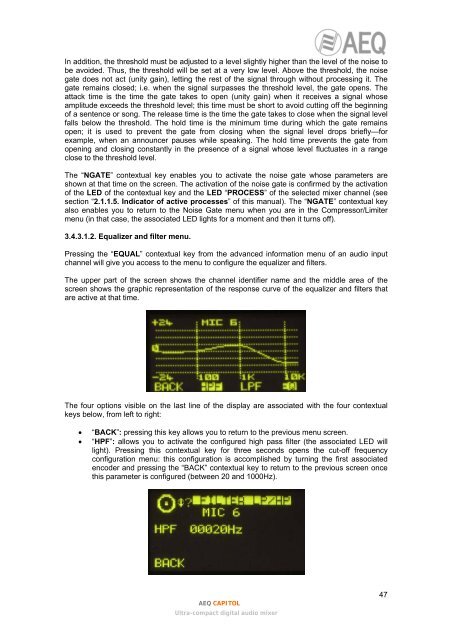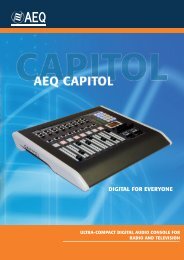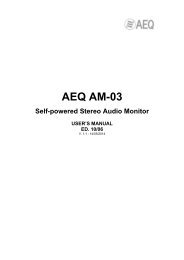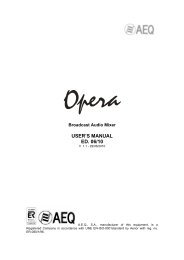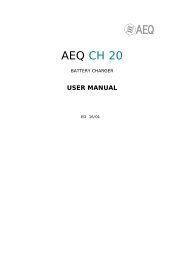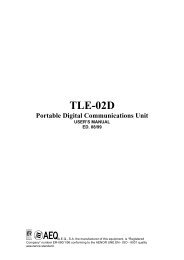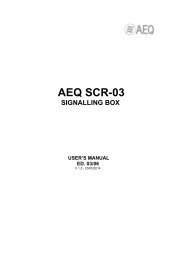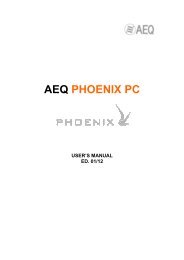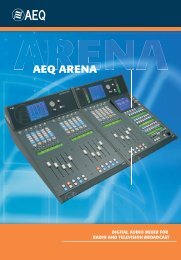Manual - AEQ International
Manual - AEQ International
Manual - AEQ International
Create successful ePaper yourself
Turn your PDF publications into a flip-book with our unique Google optimized e-Paper software.
In addition, the threshold must be adjusted to a level slightly higher than the level of the noise tobe avoided. Thus, the threshold will be set at a very low level. Above the threshold, the noisegate does not act (unity gain), letting the rest of the signal through without processing it. Thegate remains closed; i.e. when the signal surpasses the threshold level, the gate opens. Theattack time is the time the gate takes to open (unity gain) when it receives a signal whoseamplitude exceeds the threshold level; this time must be short to avoid cutting off the beginningof a sentence or song. The release time is the time the gate takes to close when the signal levelfalls below the threshold. The hold time is the minimum time during which the gate remainsopen; it is used to prevent the gate from closing when the signal level drops briefly—forexample, when an announcer pauses while speaking. The hold time prevents the gate fromopening and closing constantly in the presence of a signal whose level fluctuates in a rangeclose to the threshold level.The “NGATE” contextual key enables you to activate the noise gate whose parameters areshown at that time on the screen. The activation of the noise gate is confirmed by the activationof the LED of the contextual key and the LED “PROCESS” of the selected mixer channel (seesection “2.1.1.5. Indicator of active processes” of this manual). The “NGATE” contextual keyalso enables you to return to the Noise Gate menu when you are in the Compressor/Limitermenu (in that case, the associated LED lights for a moment and then it turns off).3.4.3.1.2. Equalizer and filter menu.Pressing the “EQUAL” contextual key from the advanced information menu of an audio inputchannel will give you access to the menu to configure the equalizer and filters.The upper part of the screen shows the channel identifier name and the middle area of thescreen shows the graphic representation of the response curve of the equalizer and filters thatare active at that time.The four options visible on the last line of the display are associated with the four contextualkeys below, from left to right:• “BACK”: pressing this key allows you to return to the previous menu screen.• “HPF”: allows you to activate the configured high pass filter (the associated LED willlight). Pressing this contextual key for three seconds opens the cut-off frequencyconfiguration menu: this configuration is accomplished by turning the first associatedencoder and pressing the “BACK” contextual key to return to the previous screen oncethis parameter is configured (between 20 and 1000Hz).<strong>AEQ</strong> CAPITOLUltra-compact digital audio mixer47


